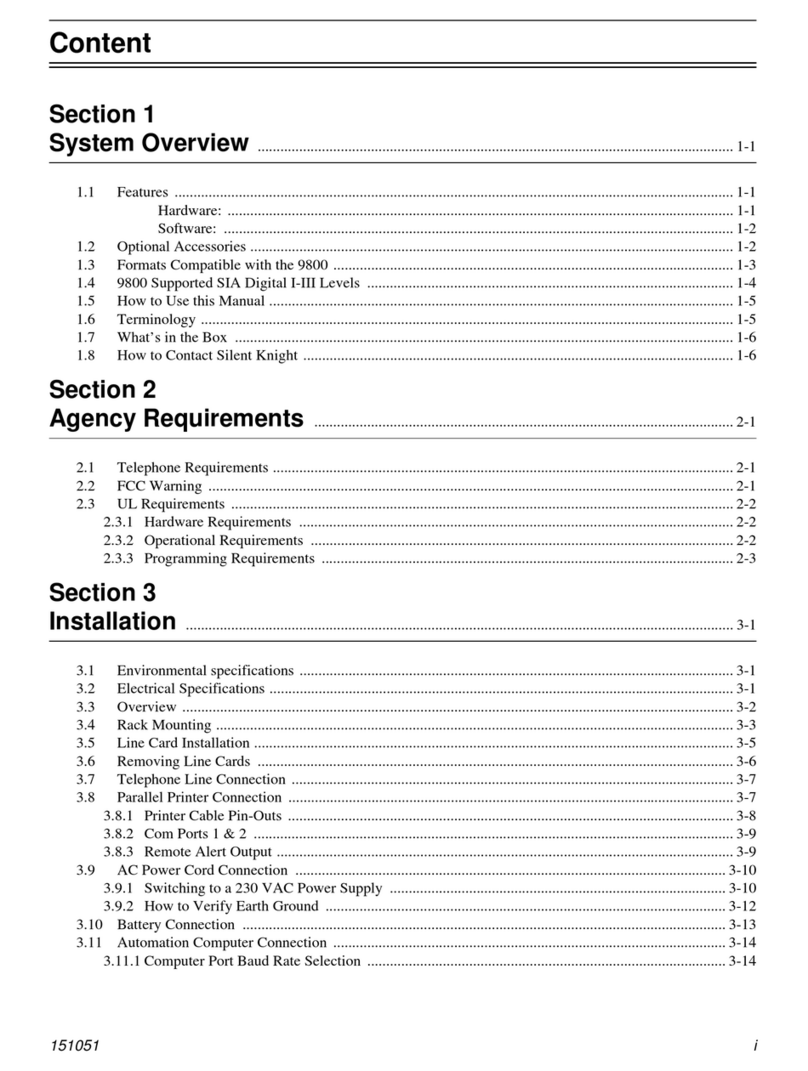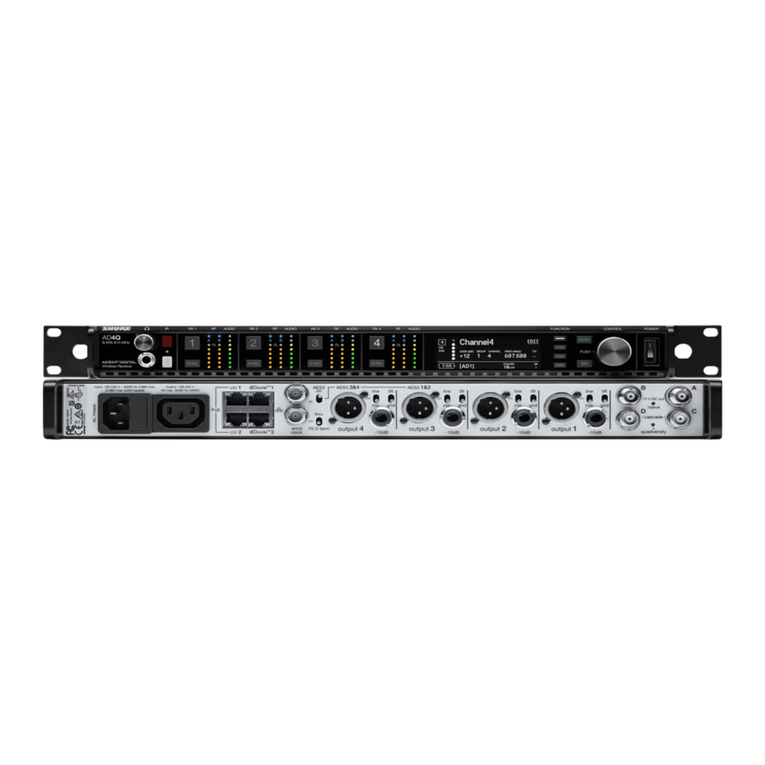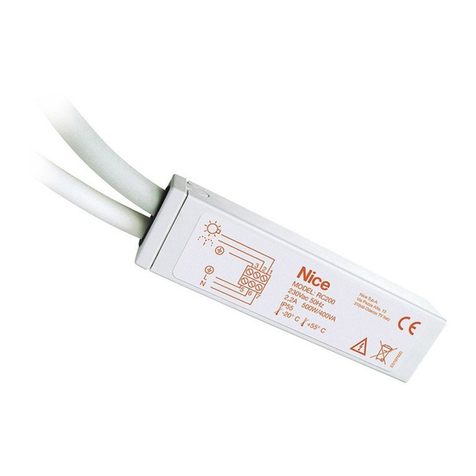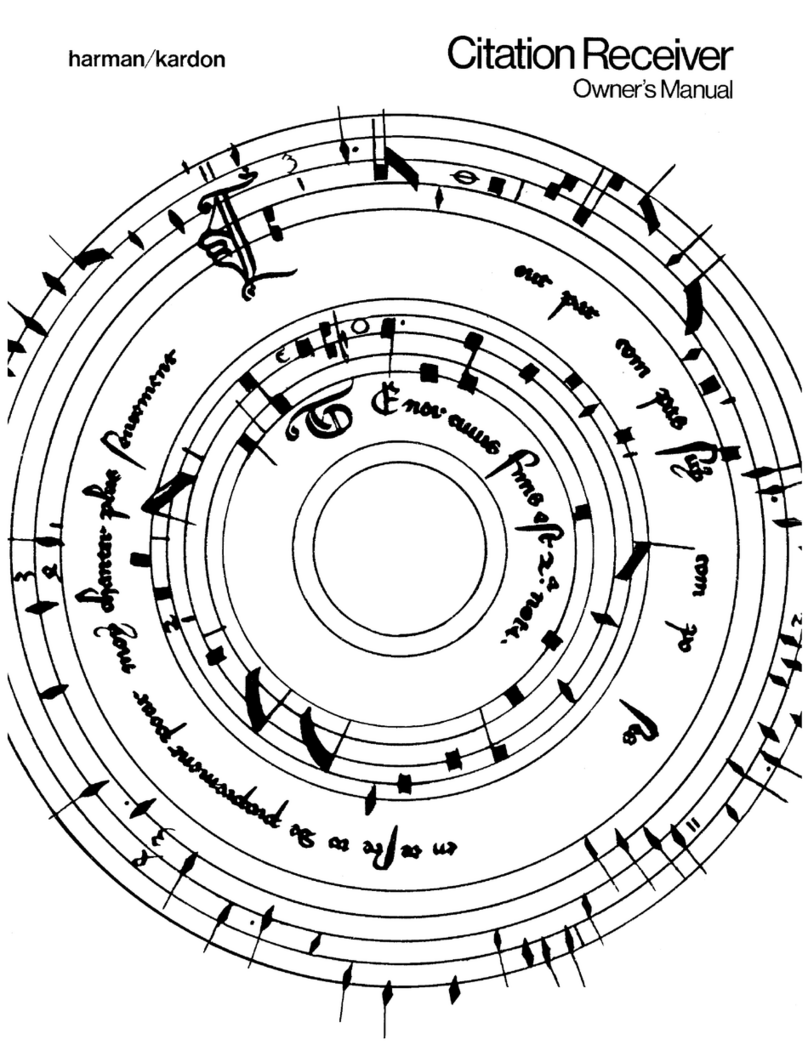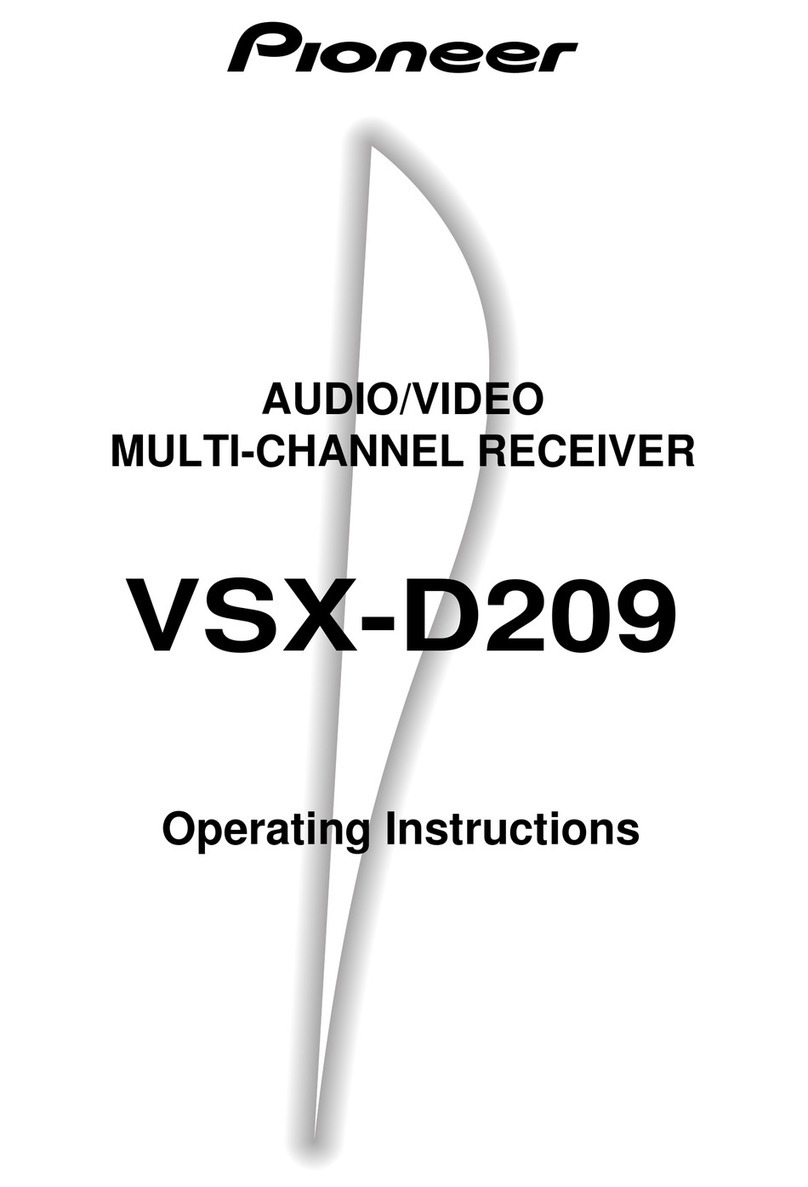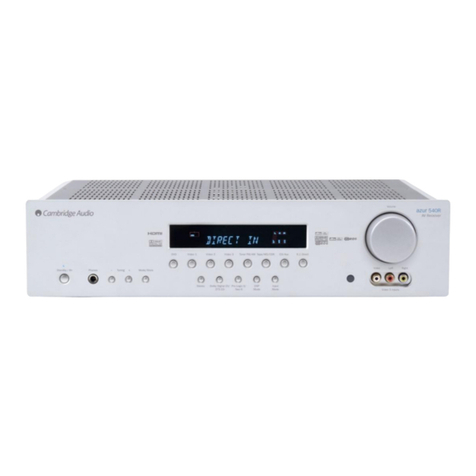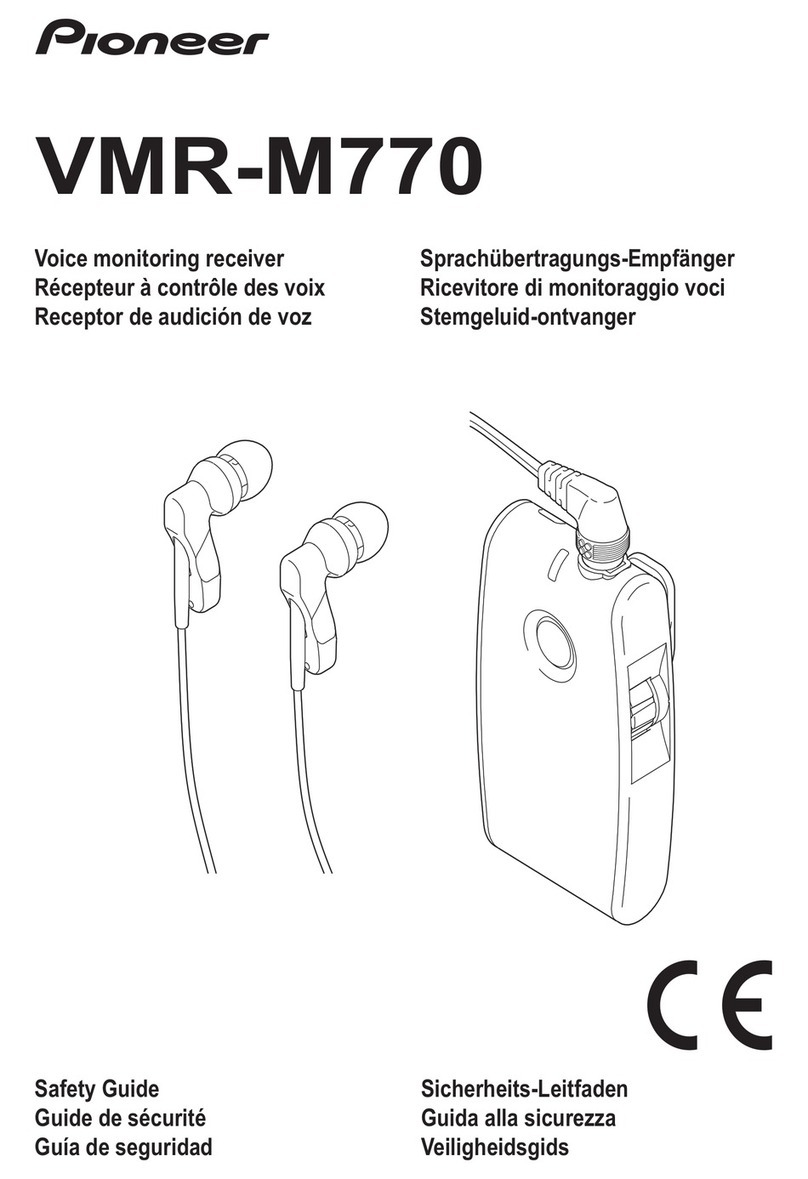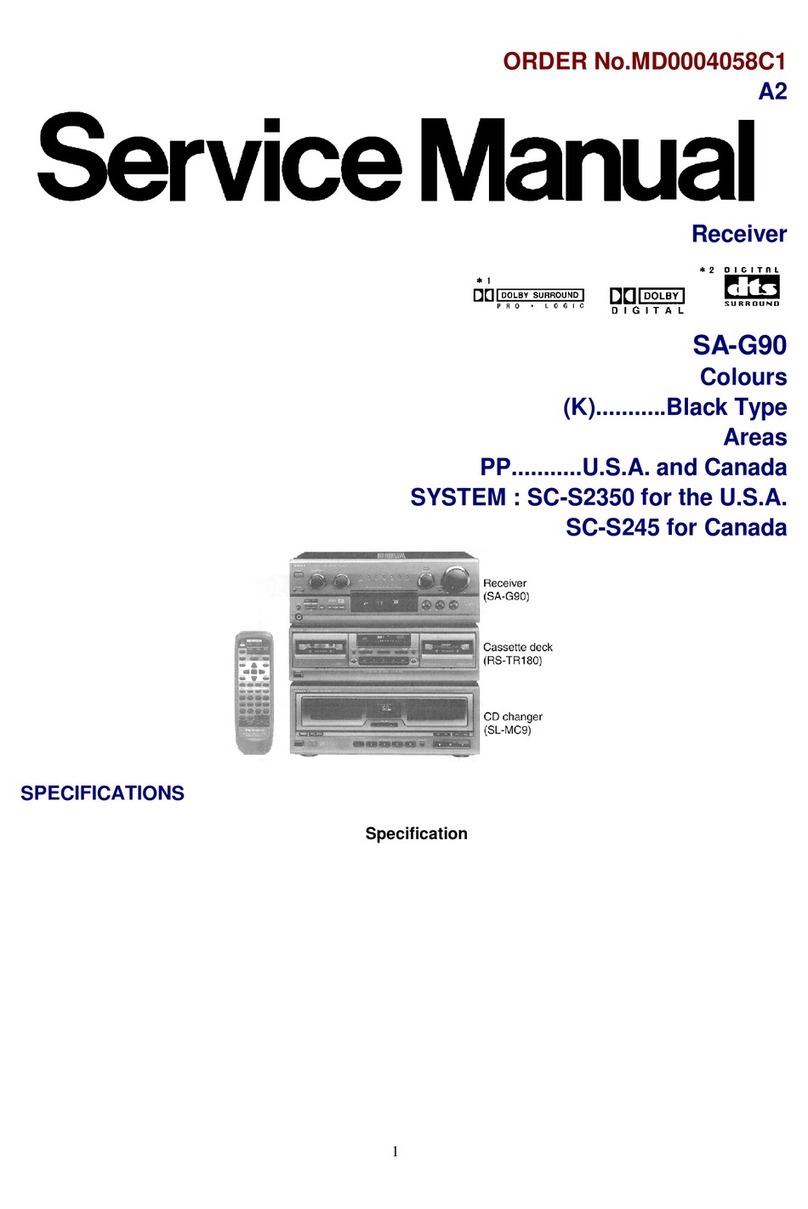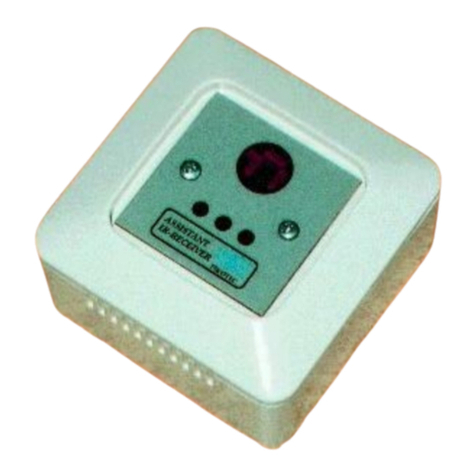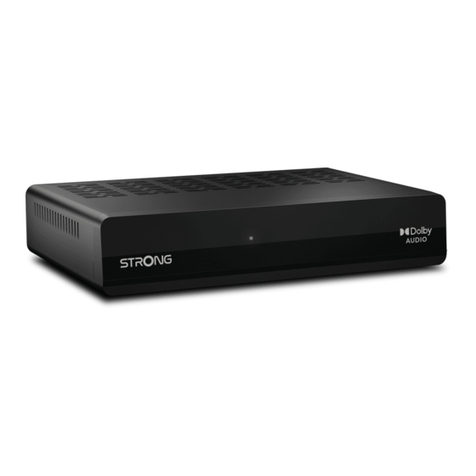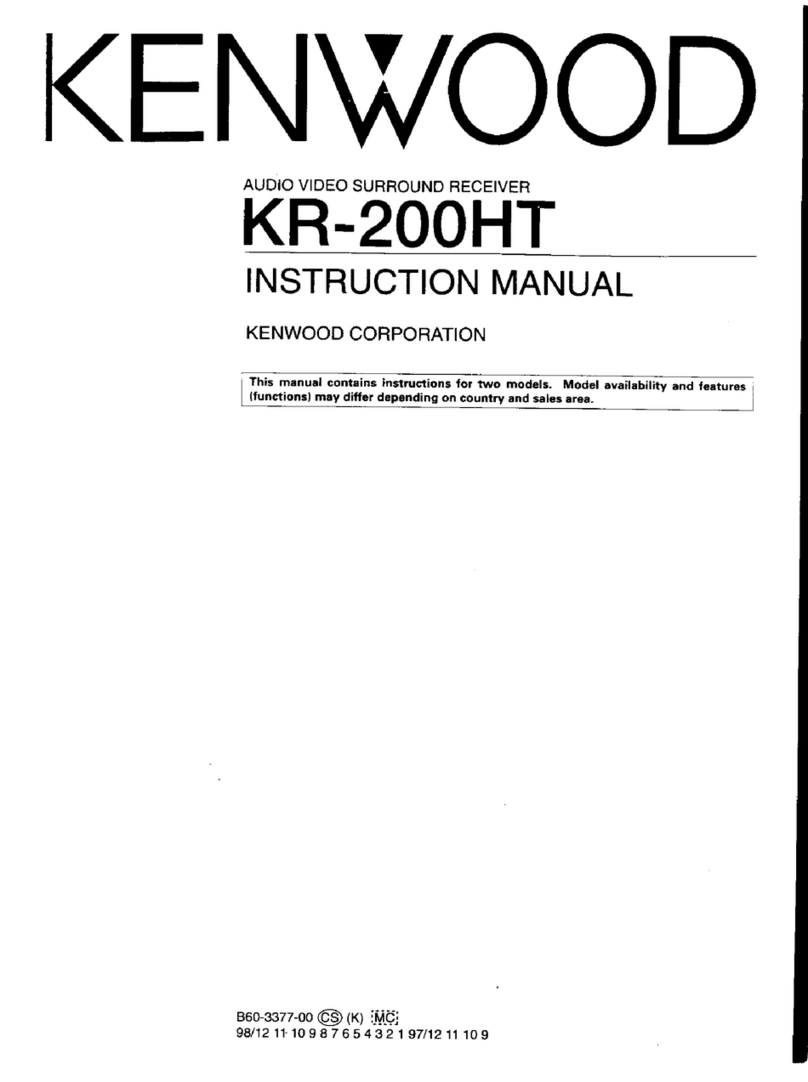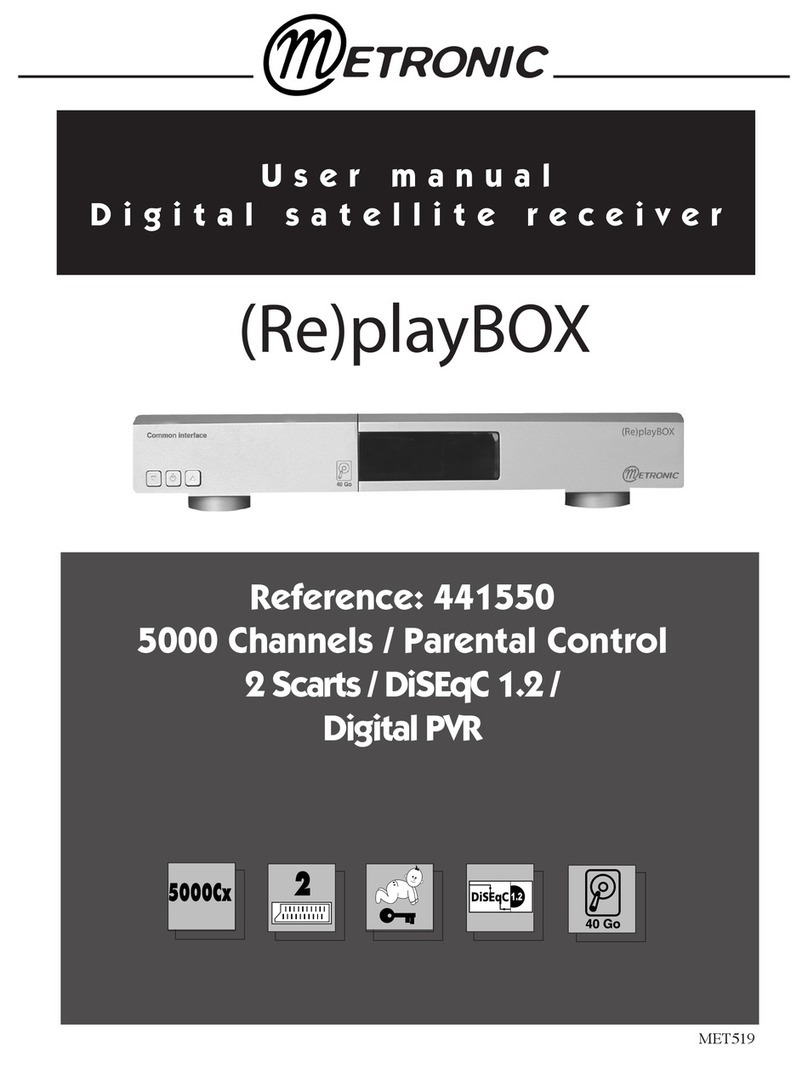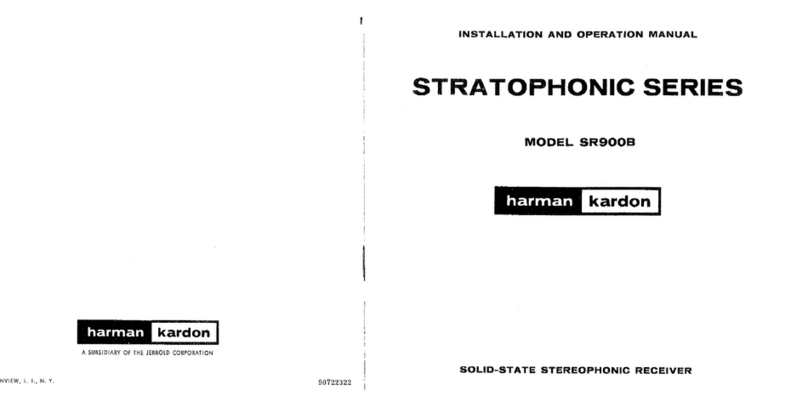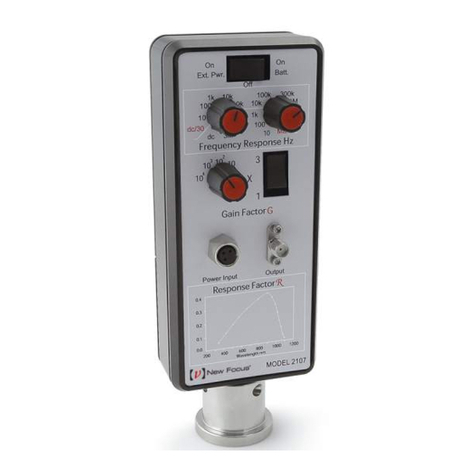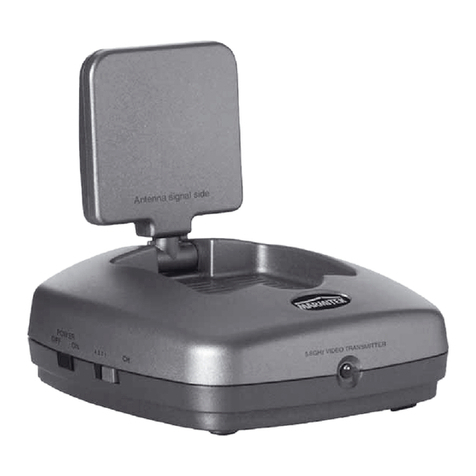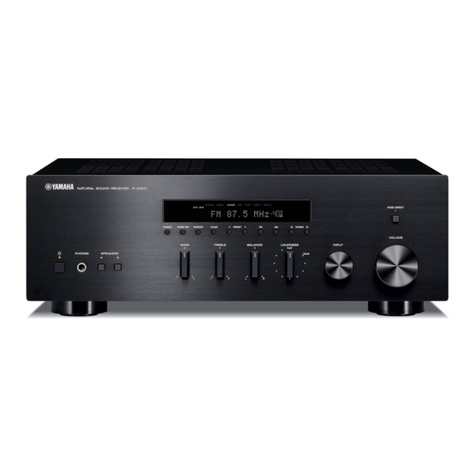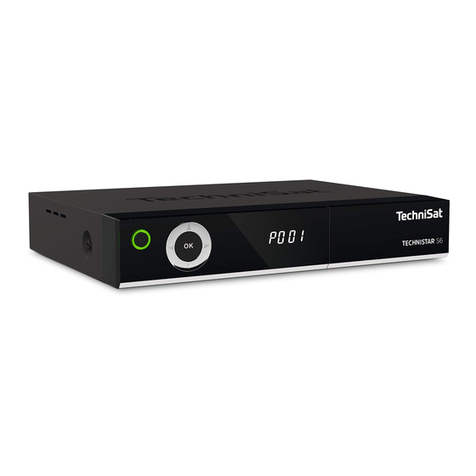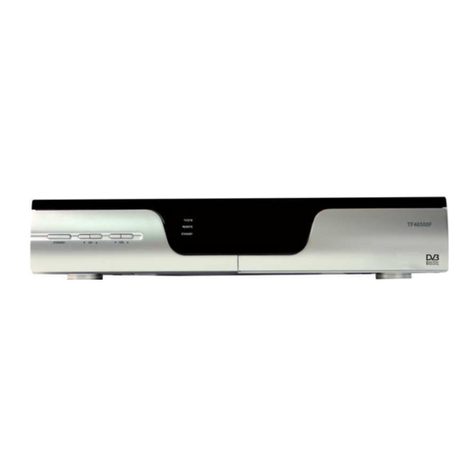SILENT KNIGHT 9500 User manual

Desktop Digital
Alarm Receiver
Part Number 151059F, 01/03
SILENT KNIGHT
MODEL 9500
Installation Manual

151059 i
Content
Section 1
System Overview .............................................................................................................................. 1-1
1.1 Features .................................................................................................................................................... 1-1
Hardware: ...................................................................................................................................... 1-1
Software: ....................................................................................................................................... 1-2
1.2 Optional Accessories ................................................................................................................................ 1-2
1.3 Formats Compatible with the 9500 .......................................................................................................... 1-3
1.4 9500 Supported SIA Digital I-III Levels ................................................................................................. 1-4
1.5 How to Use this Manual ........................................................................................................................... 1-5
1.6 Terminology ............................................................................................................................................. 1-5
1.7 What’s in the Box .................................................................................................................................... 1-6
1.8 How to Contact Silent Knight .................................................................................................................. 1-6
Section 2
Agency Requirements ............................................................................................................... 2-1
2.1 Telephone Requirements .......................................................................................................................... 2-1
2.2 FCC Warning ........................................................................................................................................... 2-1
2.3 UL Requirements ..................................................................................................................................... 2-2
2.3.1 Hardware Requirements ................................................................................................................... 2-2
2.3.2 Operational Requirements ................................................................................................................ 2-2
2.3.3 Programming Requirements ............................................................................................................. 2-2
Section 3
Installation ................................................................................................................................................. 3-1
3.1 Environmental specifications ................................................................................................................... 3-1
3.2 Electrical Specifications ........................................................................................................................... 3-1
3.3 Overview .................................................................................................................................................. 3-2
3.4 Line Card Installation ............................................................................................................................... 3-4
3.5 Removing Line Cards .............................................................................................................................. 3-5
3.6 Telephone Line Connection ..................................................................................................................... 3-6
3.7 Parallel Printer Connection ...................................................................................................................... 3-7
3.7.1 Printer Cable Pin-Outs ...................................................................................................................... 3-8
3.7.2 Com Ports 1 & 2 ............................................................................................................................... 3-8
3.7.3 Remote Alert Output ......................................................................................................................... 3-9
3.8 AC Power Cord Connection .................................................................................................................. 3-10
3.8.1 Using Standard Power Cord ........................................................................................................... 3-10
3.8.2 Using UL Listed AC Power Connection ........................................................................................ 3-10
3.8.3 Switching to a 230 VAC Power Supply ......................................................................................... 3-12
3.8.4 How to Verify Earth Ground .......................................................................................................... 3-13
3.9 Battery Connection ................................................................................................................................ 3-14
3.10 Automation Computer Connection ........................................................................................................ 3-16
3.10.1 Computer Port Baud Rate Selection ............................................................................................... 3-16

Model 9500 Central Station Receiver Installation/Operation Manual
ii 151059
Section 4
Operation ..................................................................................................................................................... 4-1
4.1 Touchpad Function Buttons ..................................................................................................................... 4-1
4.2 Displays .................................................................................................................................................... 4-3
4.2.1 LED Displays .................................................................................................................................... 4-3
4.2.2 LCD Status Display .......................................................................................................................... 4-3
4.2.2.1 Adjusting LCD Contrast ........................................................................................................ 4-4
4.2.2.2 LCD Abbreviations ................................................................................................................ 4-5
4.3 Initial System Power Up .......................................................................................................................... 4-6
4.4 Log On / Log Off ..................................................................................................................................... 4-7
4.4.1 Installer Profile ................................................................................................................................. 4-7
4.4.2 Operator Profile ................................................................................................................................ 4-7
4.4.3 Default User Codes ........................................................................................................................... 4-8
4.4.4 How to log on the system. ................................................................................................................ 4-8
4.4.5 How to log off the system. ................................................................................................................ 4-9
4.5 Modes of Operation ............................................................................................................................... 4-10
4.5.1 Normal Mode .................................................................................................................................. 4-10
4.5.1.1 Manual Operation ................................................................................................................ 4-10
How to Manually Acknowledge Calls: ....................................................................................... 4-10
4.5.1.2 Automatic Operation ............................................................................................................ 4-10
4.5.1.3 Log Only .............................................................................................................................. 4-10
4.5.2 Program Mode ................................................................................................................................ 4-10
4.6 Main Menu ............................................................................................................................................. 4-11
4.6.1 How to display the Main Menu ...................................................................................................... 4-11
4.6.2 How to Maneuver Through Main Menu .........................................................................................4-12
4.6.3 Call History ..................................................................................................................................... 4-13
4.6.4 System History ................................................................................................................................ 4-13
4.6.5 System Info ..................................................................................................................................... 4-14
4.6.6 Set Time & Date ............................................................................................................................ 4-15
4.6.7 System Restart ................................................................................................................................ 4-16
4.6.8 Printer Menu ................................................................................................................................... 4-17
4.6.8.1 Print Report .......................................................................................................................... 4-18
How to Print Call History ............................................................................................................ 4-18
How to Print System History ...................................................................................................... 4-19
How to Print System Configuration ............................................................................................ 4-20
How to Print a Test Page .............................................................................................................4-21
4.6.8.2 Edit Event Format ................................................................................................................ 4-21
4.6.8.3 Configure Printer .................................................................................................................. 4-23
4.6.9 Program Menu ................................................................................................................................ 4-24
4.6.10 Diagnostics Menu ........................................................................................................................... 4-24
4.6.10.1 Phantom Menu ..................................................................................................................... 4-25
4.6.10.2 Message Que ........................................................................................................................ 4-26
4.6.10.3 Event Log ............................................................................................................................. 4-26
4.6.10.4 Format .................................................................................................................................. 4-27
4.6.10.5 LC Debug Mode ................................................................................................................... 4-27
4.6.10.6 LC Statistics ......................................................................................................................... 4-28
4.6.10.7 Port Status ............................................................................................................................ 4-29
4.7 Listen-In and Hang Up ........................................................................................................................... 4-30
4.7.1 Extend (Common) Listen-In Operation .......................................................................................... 4-30
4.7.2 PBX Operation ................................................................................................................................ 4-31
4.8 Testing the System ................................................................................................................................. 4-31

Content
151059 iii
Section 5
Programming ......................................................................................................................................... 5-1
5.1 How to Enter Program Mode ................................................................................................................... 5-1
5.1.1 Programming Fields .......................................................................................................................... 5-1
5.1.2 How to Maneuver Around in Program Mode ................................................................................... 5-2
5.2 Programming Choices .............................................................................................................................. 5-2
5.3 General Options ....................................................................................................................................... 5-3
5.3.1 Operation Mode ................................................................................................................................ 5-7
5.3.1.1 How to change the operation mode ........................................................................................5-8
5.3.2 Display Options ................................................................................................................................ 5-9
5.3.2.1 How to Change Language Display ...................................................................................... 5-10
5.3.2.2 How to Change Time Format Display ................................................................................. 5-11
5.3.2.3 How to Change Date Format Display .................................................................................. 5-11
5.3.2.4 How to Turn “On” or “Off” Daylight Savings. ................................................................... 5-11
5.3.2.5 How to Edit ITI Options ...................................................................................................... 5-12
5.3.2.6 How to Edit Format (FMT) Options .................................................................................... 5-13
5.3.2.7 How to Set Hold Last Event ................................................................................................ 5-13
5.3.3 Communications ............................................................................................................................. 5-14
5.3.3.1 How to Set Up Port Function ............................................................................................... 5-18
5.3.3.2 How to set Com Port 1 Parameters ...................................................................................... 5-18
5.3.3.3 How to Set Com Port 2 Parameters ..................................................................................... 5-19
5.3.3.4 How to Edit Init String (Par Port) ........................................................................................ 5-20
To clear an init string: ................................................................................................................. 5-21
5.3.3.5 How to Set Automation Communication ............................................................................. 5-21
How to Set the Format ................................................................................................................ 5-21
How Enable or Disable Hex Mode ............................................................................................. 5-22
How Enable or Disable Heartbeat ............................................................................................... 5-22
Time (Period of Heartbeat) ......................................................................................................... 5-23
Ack Time (Acknowledge Time) .................................................................................................5-24
ITI Options (Only Visible if ITI Gen or ITIComp Formats are Chosen) ................................... 5-25
Log Recs (For ITI Formats): ....................................................................................................... 5-26
XID (Extended ID for ITI Panels): ............................................................................................. 5-26
SupCh (Supervisory Character): .................................................................................................5-26
NoData (No Data Character for Log Record): ............................................................................ 5-26
5.3.3.6 How to Configure the On-board Annunciator Outputs ........................................................ 5-27
5.3.3.7 How to Configure the Auxiliary Relay Outputs .................................................................. 5-28
5.3.4 System Options ............................................................................................................................... 5-29
5.3.4.1 How to Change Backup Battery Setting .............................................................................. 5-30
To Exit: ........................................................................................................................................ 5-30
5.3.4.2 How to Set the Receiver ID Number ................................................................................... 5-30
To Exit: ........................................................................................................................................ 5-30
5.3.4.3 How to Configure Output for Bad Data Blocks ................................................................... 5-31
To Exit: ........................................................................................................................................ 5-31
5.3.4.4 How to Set the Normal State of the Auxiliary Relay Contact ............................................. 5-32
5.3.4.5 Select the Receivers Clock Source .......................................................................................5-32
5.3.5 Message Queue Options ................................................................................................................. 5-33
5.3.5.1 Set the Message Queue Warning On level ........................................................................... 5-33
5.3.5.2 Set the Message Queue Warning Off Level ......................................................................... 5-34
5.3.5.3 Set the maximum Buffer Limit ............................................................................................5-34
5.4 Line Card Menu ..................................................................................................................................... 5-35
5.4.1 Add Line Card ................................................................................................................................ 5-40

Model 9500 Central Station Receiver Installation/Operation Manual
iv 151059
5.4.2 Edit Line Card ................................................................................................................................. 5-40
5.4.2.1 Handshake Sequence ............................................................................................................ 5-42
To Change the Handshake Sequence Number: ........................................................................... 5-43
To Change the Format Group: ....................................................................................................5-43
To Change the Handshake Delay Time: ..................................................................................... 5-44
To Change the Handshake Duration Time: ................................................................................. 5-44
To Change the Maximum Handshake Wait Time: ...................................................................... 5-45
To Change the Acknowledgment Tone Duration Time: ............................................................. 5-45
5.4.2.2 Pulse Format ........................................................................................................................ 5-45
To Select Which Format a 5-digit Pulse Format will be received as: ......................................... 5-45
To Select Which Format a 6-digit Pulse Format will be received as: ......................................... 5-46
To Select the Inter-Digit: ............................................................................................................. 5-46
Set for 2300 and 1400 formats that require Acknowledges on Even Rounds: ........................... 5-46
Set for 3/1 and 4/1 Partially Extended Formats: ......................................................................... 5-47
5.4.2.3 Line Options ......................................................................................................................... 5-47
How to Set the Line Card for a Direct Line (Dedicated Line): ................................................... 5-47
To Change the Number of Rings Follow These Steps: ............................................................... 5-49
To Change the Ring On Time: ....................................................................................................5-49
To Change the Ring Off Time: ...................................................................................................5-50
To Select the dB Level: ............................................................................................................... 5-50
To Change the Ring Threshold Voltage: ..................................................................................... 5-50
To Change the Phone Line Sample Rate: .................................................................................... 5-51
5.4.2.4 Listen-In ............................................................................................................................... 5-52
To Change the Listen Mode: ....................................................................................................... 5-52
To Change the PBX String: ......................................................................................................... 5-53
To Change the Listen-In Timeout: .............................................................................................. 5-54
To Edit the Listen-In accounts Lists: ..........................................................................................5-54
To Add a Listen In Account ........................................................................................................ 5-55
To Edit a Listen In Account ........................................................................................................ 5-55
To Clear a Listen In Account ...................................................................................................... 5-55
5.4.2.5 Trap List ............................................................................................................................... 5-56
To Add a Trap Account ............................................................................................................... 5-56
To Edit a Trap Account ............................................................................................................... 5-56
To Clear a Trap Account ............................................................................................................. 5-57
5.4.2.6 Misc. Line Opt. .................................................................................................................... 5-58
To Change the Echo Suppress Setting: ....................................................................................... 5-58
How to Set Caller ID ................................................................................................................... 5-59
To Change the Billing Delay Setting: ......................................................................................... 5-59
To Change the Hunt Group: ........................................................................................................ 5-60
5.4.2.7 Ademco Auto Opt ................................................................................................................ 5-60
5.4.2.8 ITI Options Menu ................................................................................................................. 5-61
ITI SCode Menu: ......................................................................................................................... 5-63
To Set Date/Time Flag: ............................................................................................................... 5-65
To Enable or Disable ITI 300 Baud Negotiation: ....................................................................... 5-65
Set the Type of Listen-In Used for ITI Controls: ........................................................................ 5-65
5.4.3 Copy Devices .................................................................................................................................. 5-66
5.4.3.1 To Program the Default Settings Into a Line Card .............................................................. 5-66
5.4.3.2 Copy the Programming of an Existing Line Card to Another ............................................. 5-66
5.4.4 Clear Device ................................................................................................................................... 5-67
To Clear or Delete a Line Card Form the Receiver Follow These Steps: ................................... 5-68
5.4.5 View Device ................................................................................................................................... 5-68
5.4.6 Rollins ............................................................................................................................................. 5-69
5.5 User List ................................................................................................................................................. 5-70
5.5.1 Adding a User ................................................................................................................................. 5-71

Content
151059 v
5.5.2 Editing a User ................................................................................................................................. 5-72
5.5.3 Clearing a User Out of the Receiver ............................................................................................... 5-74
Section 6
Compatible Reporting Formats ..................................................................................... 6-1
6.1 Formats By Communication Group. ........................................................................................................ 6-1
6.2 Format Numbers Used In Printer Output ................................................................................................. 6-3
Section 7
Troubleshooting ................................................................................................................................7-1
7.1 Error Messages ......................................................................................................................................... 7-1
7.2 Troubleshooting Process .......................................................................................................................... 7-5
7.3 Safe Mode ................................................................................................................................................ 7-5
7.4 Updating the Receiver Software .............................................................................................................. 7-6
Section 8
Automation Communication Formats .................................................................. 8-1
8.1 Introduction .............................................................................................................................................. 8-1
8.1.1 Conventions Observed In This Section ............................................................................................ 8-1
8.2 Silent Knight 9000 Protocol ..................................................................................................................... 8-2
8.2.1 Data String Description And Special Characters .............................................................................. 8-2
8.2.2 Calls From Panels ............................................................................................................................. 8-4
8.2.3 Long Calls ......................................................................................................................................... 8-5
8.2.4 Bad Data ........................................................................................................................................... 8-5
8.2.5 Good Data with Bad Data ................................................................................................................. 8-5
8.2.6 Validation Byte (V-Byte) .................................................................................................................. 8-6
8.2.7 System Messages .............................................................................................................................. 8-6
8.2.8 Communication from a Computer to the 9500 .................................................................................8-7
8.2.8.1 ACKing And NACKing Data ................................................................................................ 8-7
8.2.8.2 Link Test ................................................................................................................................ 8-8
8.3 SIA CIS (Computer Interface Standard) .................................................................................................. 8-9
8.3.1 Data String Description And Special Characters .............................................................................. 8-9
8.3.2 Basic Message Format .................................................................................................................... 8-11
8.3.3 Modifier Codes ............................................................................................................................... 8-12
8.3.4 Long Calls ....................................................................................................................................... 8-13
8.3.5 System Status Messages ................................................................................................................. 8-14
8.3.6 Heart Beat ....................................................................................................................................... 8-15
8.3.7 Communication from a Computer to the 9500 ............................................................................... 8-16
8.3.7.1 ACKing and NACKing Data ............................................................................................... 8-16
8.3.7.2 Link Test .............................................................................................................................. 8-17
8.4 ITI Generic Computer Format ............................................................................................................... 8-18
8.4.1 Convention Used In This Section ................................................................................................... 8-18
8.4.2 Report Record ................................................................................................................................. 8-18
8.4.2.1 Control Panel Type and Zone Attribution Byte ................................................................... 8-19
8.4.2.2 Extended Panel ID Codes .................................................................................................... 8-20
8.4.2.3 Alarm Codes ........................................................................................................................ 8-21
8.4.3 Log Record ..................................................................................................................................... 8-22

Model 9500 Central Station Receiver Installation/Operation Manual
vi 151059
8.4.4 Test Record ..................................................................................................................................... 8-22
8.4.5 OKAY Record ................................................................................................................................ 8-23
8.4.6 ACKing and NACKing Data .......................................................................................................... 8-23
8.5 ITI Computer Interface Format .............................................................................................................. 8-24
8.5.1 Convention Used In This Section ................................................................................................... 8-24
8.5.2 General Record Structure ................................................................................................................ 8-24
8.5.3 Report Record ................................................................................................................................. 8-25
8.5.3.1 Information Field Identifiers ................................................................................................ 8-27
8.5.3.2 Panel Type Characters ......................................................................................................... 8-28
8.5.3.3 Condition Codes ................................................................................................................... 8-29
8.5.4 Test Record ..................................................................................................................................... 8-29
8.5.5 Supervisory Record ......................................................................................................................... 8-30
8.5.6 Log Records .................................................................................................................................... 8-30
8.5.7 Checksum/Control Field ................................................................................................................. 8-31
8.6 SIA 2000 ................................................................................................................................................ 8-31
8.7 SK EXP (Silent Knight Expanded) ........................................................................................................ 8-32
8.7.1 SKE Header Block .......................................................................................................................... 8-32
Example: ...................................................................................................................................... 8-32
8.7.2 Call Message Block ........................................................................................................................ 8-33
Example: ...................................................................................................................................... 8-33
8.7.2.1 Dialer Format ....................................................................................................................... 8-34
8.7.2.2 Panel Data ............................................................................................................................ 8-35
Example: ...................................................................................................................................... 8-36
8.7.2.3 Listen-in Indicator ................................................................................................................ 8-37
Example: ...................................................................................................................................... 8-37
8.7.2.4 Trap Account Indicator ........................................................................................................ 8-38
Example: ...................................................................................................................................... 8-38
8.7.2.5 Long Call Indicator .............................................................................................................. 8-38
8.7.2.6 Bad Data Field Indicator ...................................................................................................... 8-39
Example: ...................................................................................................................................... 8-39
8.7.3 System Message Block ................................................................................................................... 8-39
Example: ...................................................................................................................................... 8-39
8.7.3.1 System Messages ................................................................................................................. 8-41
8.7.4 Heart Beat Message Block .............................................................................................................. 8-42
Example: ...................................................................................................................................... 8-42
8.7.5 Validation Byte (V-Byte) ................................................................................................................ 8-42
8.7.6 ACKing and NACKing Data .......................................................................................................... 8-43
8.7.7 Commands Initiated by the Automation Computer ........................................................................ 8-44
8.7.7.1 Remote Log-on/Log-off ....................................................................................................... 8-45
To Log-in: ................................................................................................................................... 8-45
To Log-off: .................................................................................................................................. 8-46
8.7.7.2 Force Hang-up Request ........................................................................................................ 8-46
To Force Hang-up: ...................................................................................................................... 8-46
8.7.7.3 Add or Delete a Listen-in Account ...................................................................................... 8-47
To Add a Listen-in Account: ....................................................................................................... 8-47
To Delete a Listen-in Account: ................................................................................................... 8-47
8.7.7.4 Common Listen-in Extend/End Request .............................................................................. 8-48
To Extend Listen-in: .................................................................................................................... 8-48
To End a Listen-in Session: ........................................................................................................ 8-48
8.7.7.5 PBX Listen-in String ............................................................................................................ 8-49
To Create or Edit PBX String: .................................................................................................... 8-49
8.7.7.6 Add or Delete a Trap Account ............................................................................................. 8-50
To Add a Trap Account: .............................................................................................................. 8-50
To Delete a Trap Account: .......................................................................................................... 8-50

Content
151059 vii
8.7.7.7 Link Test Request ................................................................................................................ 8-50
8.8 ADEMCO 685 Automation Protocol ..................................................................................................... 8-51
8.8.1 Low Speed 3x1, 4x1, and 4x1 Express Protocols ........................................................................... 8-51
8.8.2 Low Speed 4x2 and 4x2 Express Protocols .................................................................................... 8-51
8.8.3 Ademco High Speed Automation Protocols ................................................................................... 8-52
8.8.4 685 Contact ID ................................................................................................................................ 8-52
8.9 FBII CP-220 Automation Protocol ........................................................................................................ 8-53
8.9.1 3x1, 4x1, and 4x2 Automation Protocol ......................................................................................... 8-53
8.9.2 Acron 11 Digit with Zero or Space ................................................................................................. 8-53
8.9.3 FBII Superfast ................................................................................................................................. 8-54
8.9.4 CP-220 Contact ID® ....................................................................................................................... 8-54
8.9.5 CP-220 Silent Knight FSK Formats ............................................................................................... 8-55
8.9.5.1 Format 0 ............................................................................................................................... 8-55
8.9.5.2 Format 1 (FSK 1) ................................................................................................................. 8-55
8.9.5.3 Format 6 (FSK 2) ................................................................................................................. 8-55
8.10 US ASCII Character Code ..................................................................................................................... 8-56

Model 9500 Central Station Receiver Installation/Operation Manual
viii 151059

151059 1-1
Section 1
System Overview
This manual describes installation, operation, and programming of the Model 9500 Central
Station Receiver. The 9500 is a dual line desk-top receiver. This section will list features,
optional accessories, compatible formats, and SIA options supported. This section also
contains conventions held throughout the manual, terminology relevant to this product, and
other information.
1.1 Features
Hardware:
• Supports both 120 and 240 VAC installations at 60 and 50Hz operation.
• External annunciation with auxiliary Form C dry contact relay. (Programmable)
• On-board PZT alert. (Programmable.)
• 1 parallel port.
• 2 serial ports.
• 2 rear SBUS connectors.
• Modular configuration for easy replacement and repair.
• 4 line LCD Display with 20 characters for each line.
• On-board touchpad for manual operation and programming.
• LEDs to indicate system operations.
• One line card will communicate with all supported formats.
• Supports up to 2 line cards which operate independent of each other.
• Line card parameters are stored on the MCPU for faster removal and replacement.
• Line cards support Caller ID and Caller Name Delivery.
• Line cards are individually programmable for format priority and ring parameters.
• Line cards support direct connect phone line monitoring.

Model 9500 Central Station Receiver Installation/Operation Manual
1-2 151059
Software:
• Programmable display options for time and date information.
• View or print the history information by priority or by call or by event.
• Two user profiles to control user access to the receiver.
• Supports up to 40 users.
• Listen-in and trap accounts support wild card variables. Up to 20 accounts available per
line card. (20 for listen-in and 20 for trap accounts.)
• Listen-in selectable for direct, hook flash, or PBX phone system.
• Programmable port configuration for automation, printer and backup support.
• 500 event history buffer.
• English or Spanish language display.
1.2 Optional Accessories
The following accessories for the Model 9500 receiver are available from Silent Knight Sales
Department unless otherwise indicated. You can contact Silent Knight Sales Department by
phone or by mail. The Sales Department’s toll free and local numbers are 800-446-6444 and
612-493-6435. Our mailing address is 7550 Meridian Circle, Maple Grove, MN 55369-4927.
Table 1-1: Optional Accessories for the 9500 receiver
Item Silent Knight
Model Number (if
applicable) Description/Comments
Line card 9810 The line card monitors the phone line, detects ring and processes
the message from the communicating panel.
Backup battery 6712 (See Section 3.9
for installation.) A 12VDC 7ah battery which will provide a minimum 4 hours of
backup power during an AC power loss. (See Section 2.3.2 for UL
backup power requirements.)
Printer cable Not available from
Silent Knight A standard 25-pin cable used to connect the 9500 receiver to an
external parallel printer.
UL Conduit
Connector Kit 9512 (See Section
3.8.2 for installation.) Required to meet UL requirements for NFPA 72 Central Station
Service.
Automation Software
9540 Dispatcher, alarm monitoring software with report generation
(250 accounts Maximum).
9541 Dispatcher Plus, alarm monitoring software with report
generation (no account limit).
9542 Reporter, unmonitored event capture, storage and report
generation software.

System Overview
151059 1-3
1.3 Formats Compatible with the 9500
The 9500 receiver is compatible with all Silent Knight UL listed communicators.
Table 1-2 shows the formats that the 9500 receiver can decode and the handshake frequency
groups which accommodate that format (see Section 5.4 for line card programming). Each
line card can decode every format listed below. Setting the handshake order only prioritizes
the type of communication done by each line card. Section 6 of this manual describes the
formats in greater detail.
Table 1-2: Formats compatible with the 9500
Format Name Handshake
BFSK 1400 or 2300 Hz
SK FSK, FSK 0, FSK 80 1400 or 2300 Hz
SK FSK 1, FSK 1, FSK 81 1400 or 2300 Hz
FSK II, FSK 86 1400 Hz
SK 4+2 1400 Hz
SK 3+1/3+1 Extended 1400 or 2300 Hz
Sescoa 3+1/Franklin 3+1 2300 Hz
Radionics 3+1 Checksum 1400 or 2300 Hz
4+1 Extended 1400 or 2300 Hz
FBI 4+3+1 1400 or 2300 Hz
SX-III, SX-IVA 2225 Hz
SX-IVB 2225 Hz
ITI SX-V 2225 Hz
ITI Commander 2225 Hz
ITI RF Commander, Harbor Gard 2225 Hz
ITI Commander 2000, LifeGard 2225 Hz
ITI CareTaker+, SecurityPro 4000 2225 Hz
ITI UltraGard 2225 Hz
SIA DCS 2225 Hz
SIA 2000 (pending approval) 2225 Hz
Ademco Contact ID 1400 and 2300 Hz
Ademco Super Fast 1400 and 2300 Hz
Acron Touch Tone 1400 and 2300 Hz
Ademco Express 1400 and 2300 Hz
DTMF 4+2 1400 and 2300 Hz
Westec Westec
Modem II Modem II
Modem IIe Modem IIe

Model 9500 Central Station Receiver Installation/Operation Manual
1-4 151059
1.4 9500 Supported SIA Digital I-III Levels
Table 1-3 compares the 9500 receiver to SIA Digital Compatibility Levels I, II, and III and
indicates which of them we comply with.
Table 1-3: 9500 and SIA Levels I-III comparison
9500 Function/Capability Transmitter Receiver
4Support Tonal Acknowledgments required required
4Support N blocks with Zone Numbers Only required required
4Support single Account Block per Call required required
4Support O Blocks (optional) required
4Support X Blocks (optional) required
4Support 300 Baud (Fast) (optional) required
Support Configuration Block required required
Support Data Acknowledgments required required
4Support Modifier codes id, da and ti.(optional) required
4Support Multiple Account Blocks per Call (optional) required
4Support E Blocks (optional) required
4Support Data Codes with Units Numbers (optional) required
Support RECEIVER call out and Access Passcode required required
Support Reverse Channel C Blocks required required
Support Reverse Channel P Blocks required (optional)
Support Reverse Channel A Blocks (optional) required
Support Dynamic block and Group Sizes (optional) required
4 Support Listen-in (optional) required
4 Support A Blocks to RECEIVER (optional) required
Support V-Channel communication (optional) (optional)
Level
I
Level
II
Level I
II

System Overview
151059 1-5
1.5 How to Use this Manual
This manual contains information on how to install, operate and program the 9500 receiver.
Silent Knight strongly suggests that the manual be reviewed in its entirety to become familiar
with procedures and parameters of the product. Once you are familiar with the product, the
manual can be used as a reference document.
The manual uses the following conventions:
• A small graphic of each touchpad button is used to represent which touchpad key is to be
pressed for a given operation. For example, an up-arrow would be shown as:
• LCD display This typeface represents messages that appear on the LCD.
• 2225Hz This typeface represents an editable field that appears on the LCD.
• Pages of the manual are numbered by section. For example, a page numbered as “5-1” is
Page 1 of Section 5.
• When this manual refers to default settings, it means programmable options set at the fac-
tory. Any programming after the receiver is powered up will change these setting.
1.6 Terminology
This section lists terminology that is specific to this product and their meaning.
Term Meaning
Communication Group Silent Knight has separated the different types of communication by
handshake type. These handshake types can be assigned in a numbered order.
(See Section 6 for more details.)
Listen-in Listen-in is the ability to listen in to what is happening real-time from the
central station to a remote location. This can help the central station operator
determine if he or she should dispatch for a particular alarm situation.
PZT PZT is an abbreviation for a piezo alert sounder.
PIN An abbreviation for Personal Identification Number. PINs are used to log in
and out of the receiver.
SBUS Serial Bus interface to connect a 9500 receiver to 9510 Line cards and the
LCD display.
MCPU Master Central Processing Unit.
Main Menu The main menu will be displayed as either <Installer Menu> or <Operator
Menu> . However, this manual will refer to them as the main menu.
ACK Stands for acknowledgment.
NACK Stands for no acknowledgment.

Model 9500 Central Station Receiver Installation/Operation Manual
1-6 151059
1.7 What’s in the Box
This section contains a list of the parts that are shipped with the 9500 receiver and a brief
description of their intended use.
1.8 How to Contact Silent Knight
If you have a question or encounter a problem not covered in this manual, contact Silent
Knight Technical Support at 800-328-0103 (or 763-493-6455). To order parts, contact Silent
Knight Sales at 800-446-6444 (or 763-493-6435).
Item Quantity P/N Description
Alert Relay Wiring Harness 1 130393 Wiring harness used to connect the 9500 receiver to a
backup battery. It also provides a normally open or
normally closed output for an alert sounder.
9500 Installation &
Operation Manual 1 151059 A manual covering installation and operation
information related to the 9500 receiver.
Central Station Receiver 1 9500 The central station receiver assembly.
Line Card 1 9810 Line card for land lines.
Strain Relief Tie Wrap 1 120101 Tie wrap usedas a strain relief on the phonecord. See
Figure 3-3 for location of strain relief tabs.
Telephone Cord 1 130071 A 7 foot long telephone cable with RJ-11 connectors.
Power Cable 1 119229 AC power cable used to connect the 9500 receiver to
an AC wall plug.

151059 2-1
Section 2
Agency Requirements
2.1 Telephone Requirements
If requested by the telephone company, the following information must be provided before
connecting this device to the phone lines:
This device may not be connected directly to coin telephones or party line services.
This device cannot be adjusted or repaired in the field. In case of trouble with the device,
notify the installing company or Silent Knight for an RMA and then return it to:
Silent Knight Security Systems
7550 Meridian Circle
Maple Grove, MN 55369-4927
800-328-0103 or 763-493-6455
The telephone company may make changes in its facilities, equipment, or procedures that
could affect the operation of the equipment. If this happens, the telephone company will
provide advance notice to allow you to make the necessary modifications to maintain
uninterrupted service.
2.2 FCC Warning
This device complies with FCC Rules Part 68.
This device has been verified to comply with FCC Rules Part 15. Operation is subject to the
two following conditions: (1) This device may not cause radio interference, and (2) This
device must accept any interference received including interference that may cause undesired
operation.
A. Manufacturer: Silent Knight
B. Model Number: 9500
C. FCC Registration Number: AC6USA-31519-AL-E
D. Type of jack (to be installed by the tele-
phone company): RJ31X
Ringer equivalence: 0.1B

Model 9500 Central Station Receiver Installation/Operation Manual
2-2 151059
2.3 UL Requirements
Follow the procedures outlined in the sections below for listing as an NFPA 72 Central Station
Service installation. The 9500 is also suitable for household and commercial burglary service.
Note: Installation regulations are subject to the jurisdiction of the local authority.
2.3.1 Hardware Requirements
1. A second 9500 must be installed as a backup in case the primary 9500 fails. The backup
system must be able to take over within 30 seconds. (Note: This requirement does not
apply to burglary-only installations.)
2. AC power must run in conduit and be attached to the 9512 conduit connector kit. See
Section 3.8.2.
2.3.2 Operational Requirements
1. The transmitters reporting to the 9500 must be UL Listed DACTs (digital alarm communi-
cator transmitters).
2. The central station must provide a minimum of 24 hours of backup power within 30
seconds of a AC power loss. The backup must either be in the form of a UL listed UPS or
electrical generator.
3. If the 9500 is not automated, the central station operator must check for the 24 hour test
signals from the communicators. (Note: This requirement does not apply to burglary-only
installations.)
4. The connection between the 9500 and the UL listed computer should be according to the
pin configuration for Com port 1 as shown in Section 3.10, Figure 3-14 and Figure 3-15,
of this manual.
5. If a computer is used, the computer and its accessories must be installed in the same room
as the receiver.
6. The listen-in feature is intended for burglary applications only and may not be used if the
receiver will be accepting commercial fire signals.
2.3.3 Programming Requirements
In a UL listed installation, the Model 9500 receiver must be programmed according to the
following procedure:
• Do NOT use the alarm output relay in UL installations.
• Each log-on code must have at least four digits.

151059 3-1
Section 3
Installation
This section contains information necessary to install a 9500 Central Station Receiver.
3.1 Environmental specifications
• Temperature range is 32º to 120º F.
• Indoor use only.
• 85 percent non-condensing humidity.
• Non-corrosive environment.
3.2 Electrical Specifications
IMPORTANT!
Do not connect power to the system until you have read these instructions carefully.
Line Voltage: 120VAC ± 10% 60Hz, 100VA
240VAC ± 10% 50Hz, 100VA
Fuse: 2.5A Slow Blow
Backup Battery Connection:
Note: A 12 VDC battery
does not provide standby
time required by UL and
NFPA standards. A UPS
(listed for Protective
Signaling Use) must be
utilized when standby power
is required. See 5.3.4 for
details on backup battery
configuration.
Input 12 VDC Nominal 3 Amp Max.
Output 13.65 VDC 1 Amp charging current
Auxiliary Relay: 2.5 Amp @ 48VDC Resistive Power Limited
2.5 Amp @ 48VAC Resistive Power Limited

Model 9500 Central Station Receiver Installation/Operation Manual
3-2 151059
3.3 Overview
The 9500 is assembled at the factory. One line card is shipped with the 9500 receiver. Follow
the procedures described in Section 3.4 to install additional line cards.
Figure 3-1 Model 9500 Front View
Figure 3-2 Model 9500 Front View Without the Cover On
LED
Display
Touchpad
LCD
Display
Line Card Guides
Phone Line Slots
Inserted Line Car
d
Power Switch
Phone Line
Connector
Main

Installation
151059 3-3
Figure 3-3 Model 9500 Rear View
Figure 3-4 Side View
AC Power
Cord Connecto
r
Fuse
Remote Relay
Parallel
Printer Port
Serial
Ports
Phone Line
Slot
Phone Line
Tie Wrap Holders
Strain Relief Connector
Flip Leg Down to
Raise Up Front
Cover Screw
s
(Two on each
side)
Other manuals for 9500
2
Table of contents
Other SILENT KNIGHT Receiver manuals
